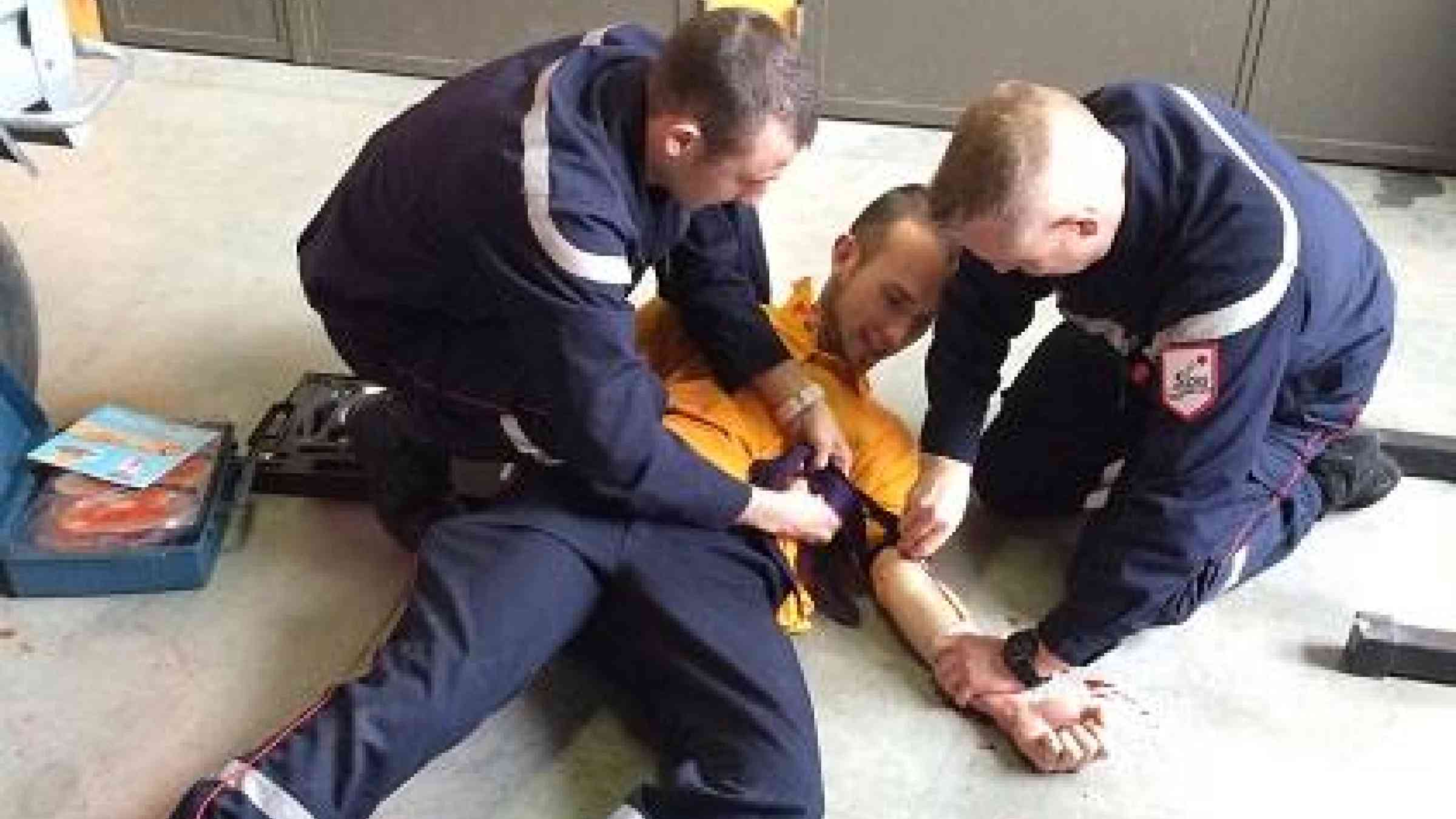French public learns life-saving skills

THOIRY, France, 2 March 2016 – Launched by France in the wake of the November 2015 Paris attacks, a nationwide programme has helped the public learn critical medical skills that can save lives in an emergency or a disaster.
Whether in extreme circumstances or in daily life, the ability of ordinary people to provide emergency first aid before the arrival of medics is essential.
Demand for crash first aid courses surged after the attacks perpetrated by the Islamic States in Iraq and the Levant (ISIL) on the Bataclan concert hall, cafe terraces and the national stadium. One hundred and thirty people lost their lives and more than 400 were injured, scores of them critically.
Since January, residents of France have been offered the chance to learn basic life-saving actions, in a programme organised by the government along with local rescue and civil defence services, the Red Cross and other groups.
In Thoiry, a village at the foot of the Jura Mountains near the border with Switzerland, local people flocked to a recent training session hosted at the municipal fire station. All told, 62 people aged from between 11 and 80 took part.
“Thank you for doing your public duty and for coming here to learn the actions that save lives,” station chief Lieutenant Marc Royer said to the assembled participants, before his staff divided them into groups that rotated between half-hour sessions on specific techniques.
In the station’s garage, two firefighters acted out a confrontation that ended with one stabbing the other in the left arm. As fake blood poured onto the ground, participants were instructed how to help the victim by laying him down and staunching the flow with a tourniquet made from a necktie and a ballpoint pen.
The trainees also worked on a line of heart-massage dummies, fine-tuning their technique to the required 100 pushes per minute. Underlining the importance of that exercise, an instructor pointed to the stark fact that each minute without a heart massage reduces a person’s chances of survival by 10 percent, that brain damage can occur after three minutes, and that the emergency services may not be there within 10 minutes.
Finally, the trainees were taught how to use a defibrillator in the event of heart failure. They are increasingly common in public spaces, and are nothing like the versions seen in television shows, meaning that getting to grips with how to use them well beforehand is essential.
“All this can make the difference between saving a life and having that life slip out of your hands,” said firefighter and instructor Eric Herbé.
“It’s exactly like early warning sirens, where it’s not just a matter of having them but of making sure that the public understands the message and acts on it. If people don’t know what to do, then it doesn’t work,” he added.
Local resident Fabienne Odic echoed that.
“It’s really important to know what to do and how to do it. This kind of knowledge and skill is what can make a difference for everybody, whatever you’re dealing with,” she said.
Raising the public’s capacity to deal with hazards, both natural and man-made, is a key goal of the Sendai Framework for Disaster Risk Reduction, a 15-year global blueprint that was adopted by the international community in March 2015.